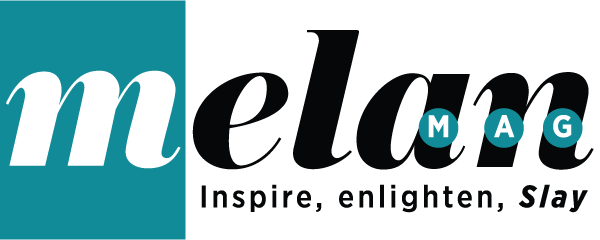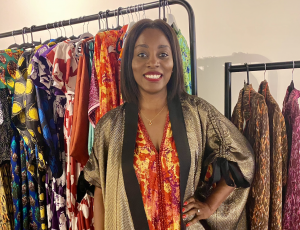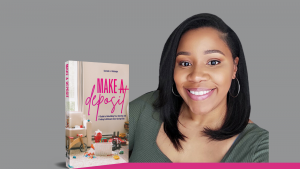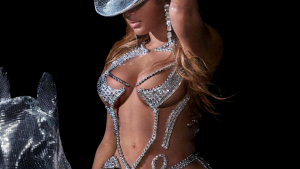“Nobody needs injectables” was the message aesthetics experts shared with an online audience at Black Skin Decoded, but nonetheless, it’s time to normalise the conversation around Black women getting cosmetic procedures.
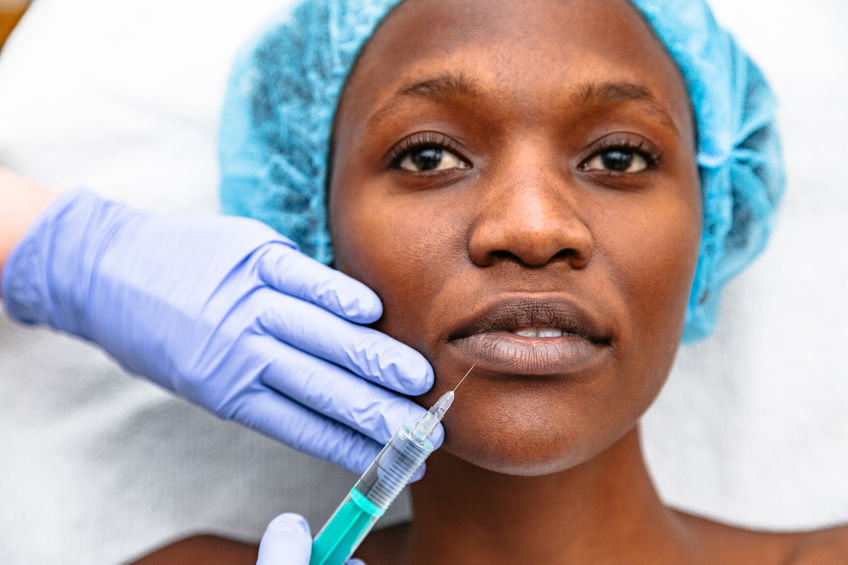
Medical and cosmetic doctor, Ewoma Ukeleghe, joined cosmetic surgeon Dr Benji Dhillon and Dr Esho Tijon, who you might recognise from E4’s Body Fixers, for a fascinating chat about non-surgical cosmetic procedures and injectables. Though Black people are widely excluded from the marketing of these products and services, it doesn’t mean we aren’t contemplating getting work done or aren’t already clients.
The trio were quizzed by the larger-than-life host and presenter, Zezi Ifore, during a one-hour chat which gave us the tea on botox, dermal fillers and how to use cosmetic procedures to our advantage.
If you missed Black Skin Decoded, the virtual coming together of 13 world-renowned beauty and skincare experts, along with the Black Skin Directory, GLAMOUR magazine and IL Makiage makeup, rewind to the beginning of our beauty mini-series for a skincare lesson before switching over to eye care.
Now, let’s talk cosmetic injectables.
What is botox?
Dr Benji Dhillon (BD) – Botox is a naturally-occurring protein so it’s not something just made up by clever scientists, but what clever scientists have done is they’ve managed to bottle it into these beautiful little vials. How it works is by making muscles weaker, temporarily.
What are injectables?
Dr Esho Tijon (ET) – Injectables are anything that can be delivered by a needle, which is either a drug or medical device, either through the vein, artery, or directly into muscle or fat.
What can dermal filler be used for?
- To contour, change and lift areas of the face
- Add volume to the face to replace fat
- Hydration i.e. injectable hyaluronic acid or vitamins
- Improve skin quality and texture
Why do some Black women feel injectables aren’t for them?
Dr Ewoma Ukeleghe (EU) – On the industry end, Black women are excluded from the conversation, which manifests itself through advertising. I don’t think I’ve ever seen a Black woman featured for any of these filler brands which is insane – this is a multi-billion dollar business. That then sometimes translates into injectors and service providers [having not] yet created a safe space for Black women to get these injectables and to be quite frank with you, some just don’t know how to deal with Black women…[or] really understand their needs when it comes to fillers because different races, and again I’m generally speaking, have different reasons for getting fillers. From a consumer point of view, I think there’s a feeling that injectables, filler particularly, are a “white woman thing” and if you’re Black – why do you want filler? Are you ashamed of yourself? It’s yet to be normalised in our community, but I think that’s definitely changing. That’s something I’m working on changing.
ET – Education tells us that fillers have so many properties to them. People initially think they’re just there to volumise. If we look at Black women traditionally, the lips will tend to be larger and we tend to have a 50/50 ratio (between the top and bottom lip) and so people question why they need fillers when some people are coming in for hydration.
Hyaluronic acid adds water to the area – it’s hydrophilic – so many people use filler that will hydrate the area and make it much more smooth. If you have larger lips already, you have a larger surface area so you’re losing moisture from the lips more, so dryness can be a problem.
The other part is definition. If you do have larger lips, again, that doesn’t dictate that you’ll have a defined vermillion border, so the surrounding of the lip itself. Many people would look to makeup to define that border but what people don’t realise is if particular fillers are injected in a particular way, they can cause that definition.

Image credit: @BadGalRiri
BD – I think where fillers and Botox become extremely useful is at the varying stages of people’s lives so after massive weight loss, people just want to restore their confidence because you lose such volume from the face, fillers can be used really beautifully to restore a bit of definition. A big group of people that are forgotten about is mothers. They go through a lot and a little bit of filler or Botox in the right areas can transform an individual physically and also their self-esteem.
What are the most common procedures Black patients ask you for?
- Treatments to give more typically ethnic features
- Lip filler for definition or to balance out the top/ bottom lips
- Skin treatments – “Everyone wants their skin on fleek. Everyone wants that Black girl glow,” Dr Esho said.
- Chin filler
Is there a risk of scarring getting dermal filler as a Black person?
ET – In general with injectables, it’s very rare because the type of needle is a small entry point, it’s very fine, very immediate and very precise. When we see keloid scarring, it’s usually with large incisions, and it’s more with trauma than surgery itself because of the way the incision is actually made, so it makes it more likely to occur in those situations than not. But it doesn’t mean it can’t scar. If I saw someone who had a small piercing and it still keloid scarred, I’d be very wary of using injectables on that patient, but again, it comes down to the history and the examination and knowing these things can happen.
What is the best procedure for restoring elasticity in Black skin?
EU – If you want to improve the elasticity and health of the skin, think about anti-ageing treatments. I love a chemical peel. It sounds frightening, but I’m obsessed with them and do them regularly on myself as well as on my clients. Also making sure you’re introducing more prescriptive skincare into your routine such as prescription retinols. In terms of the deeper structures within the skin, you can think about things like threads, so where you put sugar threads just under the skin, and that helps to lift and tighten any saggy areas. That can also be combined, or used instead of filler, and you can use radio frequency skin tightening.
How do you choose the right professional to go with?
BD – Don’t just fall for marketing, first and foremost. Do your research on that doctor’s clinic. You want to be able to see, if you can, how often that doctor is at the clinic. Are they in a fixed location? If they’re in a fixed location you know if anything were to go wrong, you can go back to that doctor, which is absolutely key. Number two – look at what they’ve done with their career. Did they start yesterday? Take your time to dive into that. Number three – look at reviews for them online.
Probably the most important thing is to go into your consultation once you’ve gotten past that first stage. The best sign of a serious doctor of aesthetic medicine is one who can show you their before and after photos, can talk to you with confidence, and be able to talk to you about the downsides as well as the upsides of the treatment. Finally, if they’re pushing you to have treatment on the same day – be cautious.
MORE TIPS FROM THE PROS ON CHOOSING THE RIGHT COSMETIC DOCTOR:
- Make sure any photos online actually reflect their work and aren’t stolen from others
- Speak to past patients if you can (they’ll be easy to find in social media comments)
- Ensure the person is a real doctor or nurse by checking the General Medical Council website
- Check in with how you feel – Do you like the doctor? Is there a positive vibe between you? Do you feel safe and comfortable? Do you trust them?
Written by Vicky Gayle – Follow her: @vi_gayle
